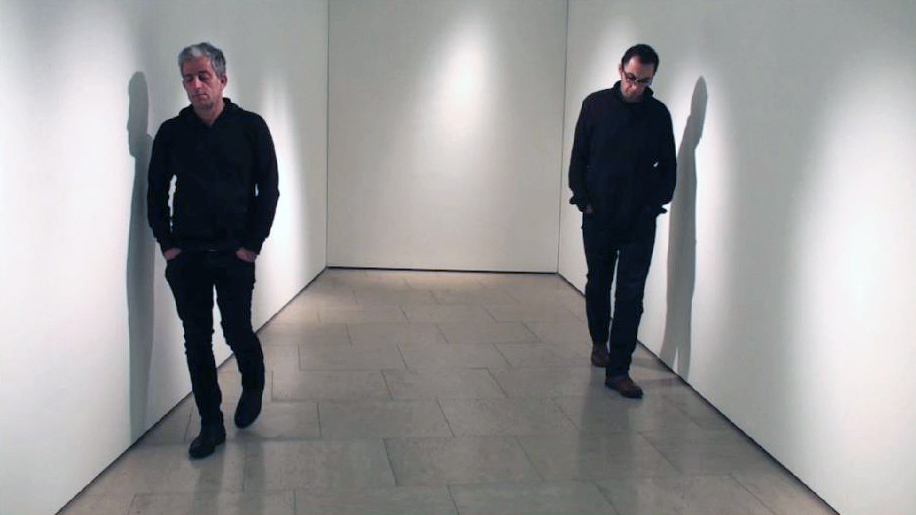
video sttill
Limbo, 2012, HD video, color/ sound, 57:30 min.
Shahram Entekhabi with Behrang Samadzadegan
Limbo, 2012
The Limbo of Contemporary Iranian Art: Exploring Boundaries and Connections
The phenomenon of contemporary Iranian art grapples with a profound divide between artists living and working in Iran and those in the diaspora, creating a metaphorical limbo that sheds light on the complex dynamics and challenges artists face in both contexts.
This divide becomes evident when we examine the practice of curated exhibitions over the past decade. These exhibitions often bear titles such as "Artists Inside and Outside Iran," artificially delineating boundaries based on prevailing geopolitical and social factors, while reflecting the development and perception of contemporary art in Iran on one hand, and Western views of contemporary art in Iran on the other, thus manipulating the understanding.
In their video/performance piece titled Limbo (2012), Entekhabi and Samadzadegan directly confront this dichotomy within the confines of a gallery. They delve into the intricacies of artistic interaction, initially sharing the same physical environment and moving through space together. However, as time progresses, they gradually drift apart, losing synchronization and awareness of each other's presence.
Through this captivating visual narrative, Entekhabi and Samadzadegan pose a profound question: are they truly invisible to one another, or do they consciously choose to ignore each other's existence? Despite the seemingly intangible barrier that separates them—nothing more than air—this separation creates tangible psychological tensions that hinder crossing borders.
In this self-imposed state of limbo, marked by a monotonous and isolating rhythm, a poignant sense of isolation, ignorance, and misunderstanding permeates the atmosphere. Yet, beneath the surface, a glimmer of hope remains. The observed fluidity and movement between the two artists suggest that the boundary separating them is not fixed but malleable, opening up the possibility of connection and understanding.